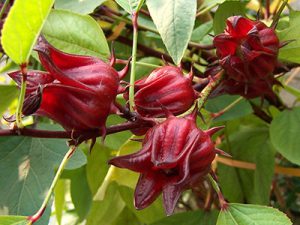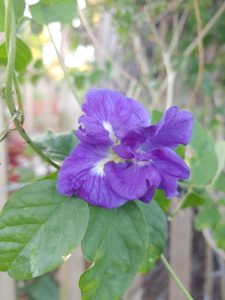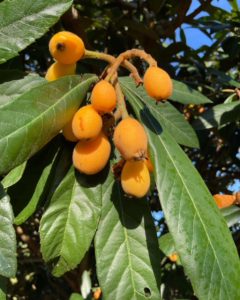Part 2 in the Uncommon Edible Landscape Plants Series, Part 1 can be found here.
The landscapes that surround our dwellings, for some, may be our first and last connection to nature. They offer respite, little bastions of nature that connect us to ecological systems familiar to our genetic heritage. Modernity has drawn us away from nature, encapsulated in our sturdy boxes we have created an ‘otherness’ that shadows our innate ecological intuition. Our homes are concepts of identity and a cognizant manifested representation of who we are and what we believe. They are much like our dress and appearance. A choice that we make in how we see ourselves and how we would like the world to see us. There are many good reasons we have created our ordered lives. Built spaces are safe, sterile, filled with stimulation of media and light and removed from the risk that nature once presented to our species. So, what does this mean for the landscapes and plants that we choose to surround ourselves with? How can these living intentional ecosystems form a connection to both our wild nature and serve our modern sensibilities?
The possibility is abundant. We can replicate uniformity and have planting beds dress up the pride of home and hearth. Landscaping can be utilized to soften the geometric severity of homes and infrastructure. Gardens enhance our living spaces by bringing nature in through focal points or blocking site lines to roads and other houses. They can also serve as communal spaces where we engage in enriching personal spiritual experiences. In this series of articles, we are exploring some of this sensory engagement with nature by examining ornamental edible plants that can be used in our gardens. These plants can beautify our landscapes, engage our senses and fill our plates with abundance.
In each of the three articles, we are describing plants with a variety of complexity of form and character, plants whose traits can enhance and beautify, while offering nourishment. Plants may be shrub-like, vining, rhizomes, trees or groundcover able to grow in a variety of soil, light and moisture.

Sorrell or Roselle (Hibiscus Sabdiriffa)– Perennial shrub This attractive hibiscus variety is a unique addition to any garden. Growing 3-6 feet in both height and width the plant has a great deal of vegetative cover at the base and sends shoots up much like a woody shrub. These shoots and the delicate leaves play in the wind and bring movement, color, and contrast into the landscape. Roselle can be an annual in tropical areas in Florida and perennial in the central and northern parts of the state. The contrast of the deep red stalks, green leaves offer an especially beautiful texture to the space they occupy. The lovely pale-yellow blooms with cranberry-colored centers form large vivid crimson calyxes that have been cultivated and consumed in Florida since the first settlement by Europeans.
Originally from central and west Africa these plants have made their way around the world for more than just their looks. Sorrell is highly regarded in many African and Caribbean cultures for its healing properties and is known as a cure all. The cooling tea crimson brewed from the calyxes invigorates the senses and in some places is mixed with ginger and cane sugar to add sweetness and spice. The leaves are used as a vegetable and steamed or made into spicy chutneys to add rich flavor and spice to dishes. Flowers and leaves can also be cooked with meat dishes to add tartness to sauces. Regarding the healing properties of this plant science would support many of the claims of roselle being good for one’s health with the plant or various parts of the plant containing phytochemicals that fight free radicals in the body, reduce blood pressure, fight inflammation and reduce fever.
Turmeric (Curcuma longa)-Perennial rhizome Emerald foliage erupts from golden orange rhizomes. This tropical foliage plant related to Ginger can reach two to three feet in height and will spread nicely to fill in throughout the landscape. Providing vibrant upright stems with long lanceolate leaves. This robust perennial shows a period of dormancy during our winter months but springs forth with vigor. The flowers are intermingled among the tropical leaves and provide a burst of sensational color, some varieties ombre from white to magenta. Turmeric will grow in filtered sun to partial shade with a preference for loamy rich soils.

The uses for Turmeric are varied and span centuries. The rhizome is harvested by gently digging into the soil and pulling them free. While shaking the soil free from the dark orange rhizome, you may find a fingernail sliding into the vibrant golden interior, leaving that finger marked with orange for the next few days. Turmeric was used as a food coloring, clothing dye, powdered and incorporated into religious ceremonies. The vibrant golden orange is a color of significance in Buddhist and Hindu religions. The rhizome exhibits anti-bacterial, anti-fungal and anti-inflammatory properties. Curcumin is a widely available and utilized supplement that is found in the Turmeric rhizome. Turmeric is also commonly consumed as a primary ingredient in curry, either fresh or powdered and can also be used as an infusion for teas, lattes or honey.

Butterfly Pea (Clitoria ternatea)- Perennial vine Twining delicately across trellises or mingling with other vines, the butterfly pea provides a delightful splash of deep blue to purple flowers. This perennial leguminous vine, native to Equatorial Asia, prefers full sun to part shade and is moderately drought tolerant. The vine will produce flowers year-round with a boost of verdancy in the spring. While an inedible native species of Clitoria is found in Florida, the vibrant blue blossoms of C. ternatea are unmistakable.
Flowering nearly year-round, the flowers, leaves, pods and shoots are all edible as well as beautiful. Add fresh to salads, decorate cakes and pies or use the flowers as a natural food coloring. Recent research at the University of Florida has explored the possible uses of this flower as a safer alternative to common food colorings, color variations occur with changes in acidity. Eaten directly off the vine or cooked with your favorite foods, the deep blue flowers are rich in antioxidants which are well researched at having analgesic, anti-inflammatory and anxiolytic properties.

Loquat (Eriobotrya japonica) –Small Tree There is a buzz around the loquat tree when it’s small delicate white flowers are in bloom and discovering those perfect orangey yellow fruits in the spring is truly a treat for the home gardener. Loquats are related to apples, pears, peaches and nectarines in the Rosaceae family. Sometimes called ‘Japanese plums’ these medium sized trees are actually from southeast and central China, where they have been cultivated for hundreds of years. They can grow to a height of 35 feet and are suited to a subtropical climate and full sunlight. Flowering in early fall and winter, fruits are some of the first to ripen in the early spring. Their beautiful large dark green ovate leaves with subtle serrations and fuzzy rusty lower surfaces are unique and add wonderful shade for a seating area, deck or patio.
The velvety surface of the small oval to pear-shaped fruits are delicate, so handle them carefully when harvesting. The fruit can be eaten fresh in salads, made into jams, syrups or baked into delicious confections. The fruits are a great source of Vitamin A and Potassium contributing to an overall healthy diet.
 4
4
